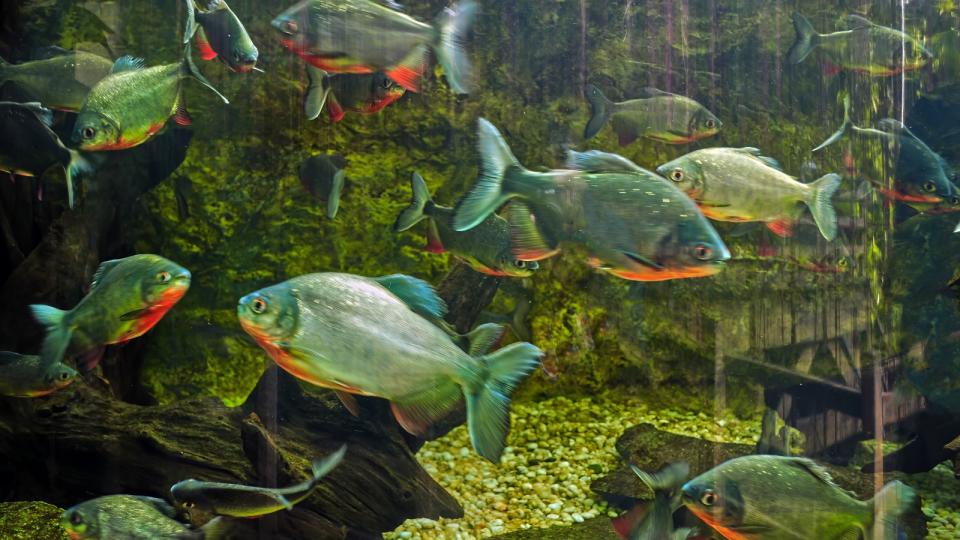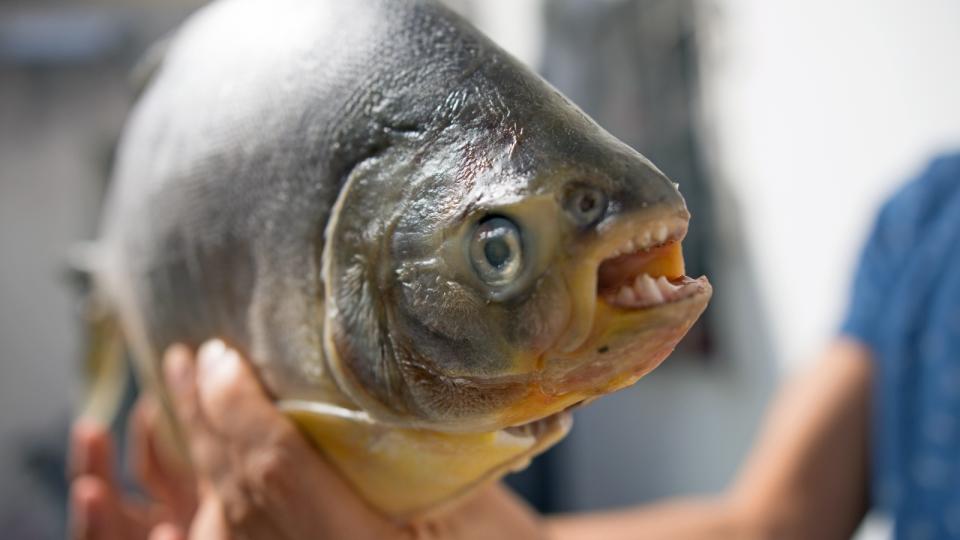New piranha-like fish with 'human teeth' and Eye of Sauron marking found deep within the Amazon

A new species of piranha-like fish has been discovered in the Amazon River after secretly masquerading as another, nearly identical species for almost 200 years. Scientists have named the newfound fish after the dark lord Sauron from J.R.R. Tolkien's fantasy epic "The Lord of the Rings."
However, the fish is nowhere near as scary as its sinister moniker implies.
The newly identified species, Myloplus sauron, is a pacu — a close relative of piranhas that are often confused for the iconic freshwater fish. Researchers discovered M. sauron while studying the nearly identical species M. schomburgkii, which was first discovered in the Amazon in 1841 but has largely been ignored by scientists since then.
In a new study, published June 10 in the journal Neotropical Ichthyology, scientists performed a genetic analysis of the M. schomburgkii population, which revealed that it was actually made up of three distinct species: M. schomburgkii, M. sauron and M. aylans. After closely examining the fish, the researchers also noticed nearly imperceptible physiological differences between the three species, including the number of vertebrae and dorsal fin rays, and the shape of the anal fins in females.
M. sauron, which was described alongside M.aylans in the new study, is named for a black band on its side. This stripe, which is also present on M. schomburgkii and M. aylans, bears a striking resemblance to the "Eye of Sauron" — a gigantic fiery eye controlled by the titular villain.
"Its pattern looks a lot like the Eye of Sauron, especially with the orange patches on its body," study co-author Rupert Collins, the senior curator of fishes at the Natural History Museum in London, said in a statement. "As soon as one of my colleagues came up with the name for this fish, we knew it was perfect for it."
Related: 'Eye of Sauron' volcano and other deep-sea structures discovered in underwater 'Mordor'

Pacus and piranhas, which are both in the family Serrasalmidae, are often believed to be aggressive, bloodthirsty predators. But a majority of both groups are actually omnivores and prefer a mainly plant-based diet. Most pacus, for example, have flattened, human-like teeth that help them break down plant matter rather than to rip through flesh.
Even the purely carnivorous species of piranhas are not as aggressive as most people imagine — a misconception fueled in part by President Theodore Roosevelt, who wrote in 1913that piranhas were the "most ferocious fish in the world" after seeing a demonstration of the fishes tearing the flesh off a cow in a matter of minutes during a trip to Brazil. However, what Roosevelt actually saw was a group of piranhas that had been purposefully rounded up and starved to whip them into a feeding frenzy.
Despite the similarities between the three pacu species listed in the new study, researchers are unsure how closely related the three fish are. It is possible that they could have all descended from a recent single ancestor. But it is also possible that they are distantly related and all evolved to look the same because this gave them the best chance of survival in their environment — a phenomenon known as convergent evolution.

"There wasn't enough evidence to suggest whether these three species all descend from one common ancestor, or whether they evolved convergently," Collins said.
related content
—Extinct 'Lord of The Rings' eagles had a 10-foot wingspan and probably could have carried a hobbit
—100-foot 'walking tree' in New Zealand looks like an Ent from Lord of the Rings
—Otherworldly 'Lord of the Rings' frog discovered in the mountains of Ecuador
As a result, it is possible that M. sauron and M. aylans could be moved into different genera if they are later found to be more closely related to other species, researchers wrote.
Researchers also identified a potential fourth pacu species in the Tapajós River — a tributary that flows alongside the Amazon River — which had large black spots instead of stripes on its side. However, the genetic differences between these fish and M. schomburgkii were "borderline," Collins said. Therefore, they are currently being labeled as a sub-population of M. schomburgkii.

